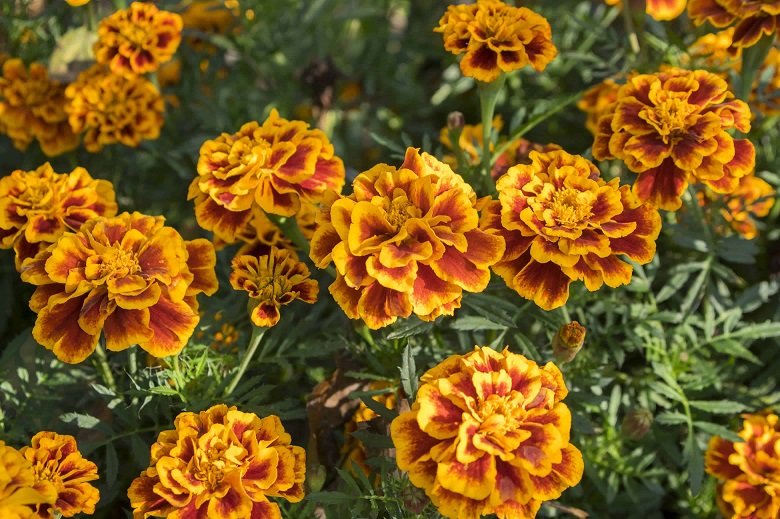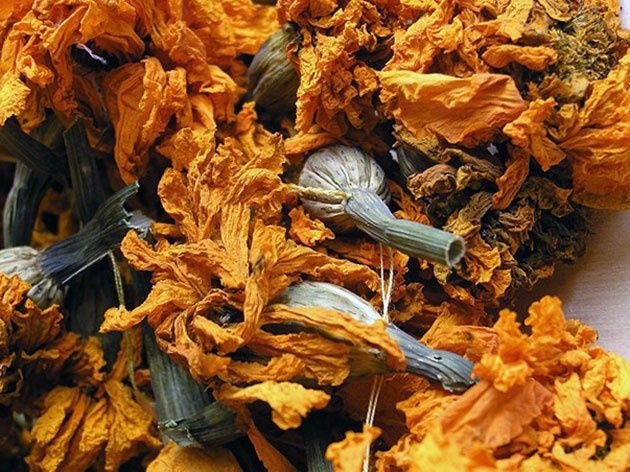
My dear readers, be sure my mom knows how to grow marigolds and told me some easy secrets! These beautiful flowers delight with their pleasant spicy aroma and various colors of the petals. Some kinds can be orange, yellow, or dark brown on a green thin stem with fluffy leaves. They grow and become lush bushes. Their flowering begins in the first days of June and continues until the first frost.
Types of Marigolds
Such plants are annual and perennial. The variety of types attracts many gardeners because marigolds are not only beautiful but also useful.

They protect neighboring plants from various pests. There are also decorative and medicinal types (marigold flowers are taken to treat the liver).
Also, many rare types and very popular ones that are unpretentious in cultivation and care:
- Terry, clove-shaped (height from 30-80 cm, except for the subspecies SunsetGiants with a height of up to 100 cm);
- With simple flowers (up to 30 cm, about 8 subspecies, Paprica kind is bright red);
- Rejected (up to 25 cm, DiscoOrange is the most compact subspecies);
- Erect (up to 45 cm, Luxor bright yellow fluffy).
Best Ways to Plant Marigold
These plants are best grown in the garden and backyard. You might also make medium-sized flower beds to put on a veranda or porch.

Fence off planting areas to make your outdoor area more beautiful. Many people prefer growing marigolds near potatoes, cucumbers and other vegetables to protect them from pests.

All plant elements contain special phytoncides that repel all pests and prevent fungi disease, including kinds that live in the soil. You can also grow these plants next to asters to protect flowers from fusarium, or near phlox and clematis to prevent nematodes.
How to Grow Marigold
You could grow marigolds from very small seedlings or you may take seeds. Its seeds are dried particles from a flower with its black stem.

Place the seeds in the soil of the container (label each strip of seeds to know which variety is planted where). If you took seedlings, you can find a suitable place in the backyard or garden and put them in soil. For cultivation, the best period is the end of strong winter or the first part of April. It takes about 50 days from germination to flowering.
Watch the seedlings, the soil should be moist (not dry or flooded). Many species are annuals, although there are now many cultivated perennial subspecies. To grow flowers of this type are much easier because they are unpretentious.
How to keep Marigold Seeds for Next Year
The seeds are in a flower box. This is a continuation of the petals, their black legs. You can remove these parts after the flowers are half dry, or take raw seeds. As the inflorescences wilt, seed pods form on the plant. One such box contains an uncountable number of seeds. If you see that the plant is starting to wilt, then it’s time to harvest the seeds for the next year.

To do this, carefully cut off the former inflorescences with scissors. Then you should open the heads and remove the seeds. You don’t need the shell anymore, you can throw it away. Now you should dry the seeds, take a newspaper and place them there.

After the full drying, take a bag or paper envelope and place the seeds there. This will allow them to ventilate and prevent mold. Store marigold seeds in a warm, dark, and dry place.
By the way, there are a lot of interesting beaty recipe from marigold flowers, for example one of them face mask, and I will write about in my nest post!

I hope these bright plants will brighten up your outdoor area because they become lush shrubs with golden sunny flowers. Select different types to diversify your backyard flower beds. Come up with beautiful flower arrangements for comfort and beauty. A large selection of flowers allows you to mix plants in height. Marigolds transform any garden, making it warm and homely.
